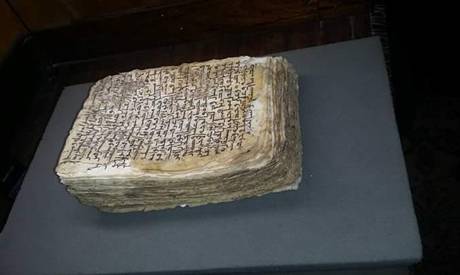Disir
Platinum Member
- Sep 30, 2011
- 28,003
- 9,607
- 910
Mohammed Abdel-Latif, assistant minister of antiquities for archaeological sites, explained that the discovered manuscript is one of those known as "Palmesit" manuscripts, dating to the 6th century AD. The manuscript is written on leather and bears parts of a medical recipe of the renowned Greek physician Hippocrates.
The manuscript has also three other medical recipes written by an anonymous scribe, one of which contains drawings of medicinal herbs of the Greek recipe.
The second layer of writing found on the manuscript is a text of the Bible known as the "Sinaitic manuscript," which spread during the Middle Ages.
Ahmed Al-Nimer, supervisor of Coptic archeology documentation at the ministry, told Ahram Online that "Palmesit manuscripts" are a very well-known type of manuscript written on leather and formed of two layers. The first one, he explained, was previously erased in order to be re-written on the leather again. "This was done due to the high cost of leather at that time," Al-Nimr pointed out.

Sixth century medical recipe uncovered in St Catherine's Monastery - Greco-Roman - Heritage - Ahram Online
Cool, huh?
The manuscript has also three other medical recipes written by an anonymous scribe, one of which contains drawings of medicinal herbs of the Greek recipe.
The second layer of writing found on the manuscript is a text of the Bible known as the "Sinaitic manuscript," which spread during the Middle Ages.
Ahmed Al-Nimer, supervisor of Coptic archeology documentation at the ministry, told Ahram Online that "Palmesit manuscripts" are a very well-known type of manuscript written on leather and formed of two layers. The first one, he explained, was previously erased in order to be re-written on the leather again. "This was done due to the high cost of leather at that time," Al-Nimr pointed out.

Sixth century medical recipe uncovered in St Catherine's Monastery - Greco-Roman - Heritage - Ahram Online
Cool, huh?

